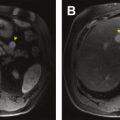Only 10% to 15% of patients with pancreatic ductal adenocarcinoma (PDAC) are candidates for potentially curative surgery due to the location or spread of disease at the time of diagnosis. Despite rapid progress in the understanding of the molecular mechanisms underlying PDAC, translation to effective therapies has been modest at best. One of the key tools available for studying biology and developing more effective therapeutics is the laboratory mouse, mus musculus . This article explores new and innovative approaches to mouse modeling and how these approaches can be utilized to move the field forward.
Key points
- •
The use of genetic engineered mouse models in pancreatic cancer has helped to advance the knowledge of this disease.
- •
It is important to use mouse models that faithfully recapitulate the disease. This should be achieved by doing a thorough analysis, both at the molecular level and at the pathologic level.
- •
A model is just another tool to use. It does not represent the full spectrum of the disease.
- •
New genetically engineered mouse models are needed to address the genetic heterogeneity seen in human patients.
Introduction
Mortality due to pancreatic cancer is projected to surpass that of breast and colorectal cancers by 2030 in the United States. This dire scenario reflects an aging population, improving outcomes for breast and colorectal cancer patients, the advanced stage of pancreatic cancer at presentation, and a lack of durable treatment responses in pancreatic cancer patients. Indeed, only 10% to 15% of patients with pancreatic ductal adenocarcinoma (PDAC), the most common type of pancreatic cancer, are candidates for potentially curative surgery due to the location or spread of disease at the time of diagnosis.
Despite rapid progress in the understanding of the molecular mechanisms underlying pancreatic ductal adenocarcinoma, translation to effective therapies has been modest at best. One of the key tools available for studying biology and developing more effective therapeutics is the laboratory mouse, mus musculus . In this sense there are some characteristics that mouse models should have in order to be useful for the advancement in a disease. Those characteristics are discussed in Box 1 .
- 1.
Genetics should try to mimic what happens in humans.
- 2.
Histology assessment by a pathologist should indicate the similarity with the human disease.
- 3.
Molecular pathways (tumor phenotype at the molecular level) in the mice should reflect the molecular pathways in human patients.
Modeling PDAC in the mouse offers certain clear benefits. The mouse is small, reproduces rapidly, and has a lifespan of 3 years. The mouse genome has been completely sequenced and bears strong homology to that of people. This review discusses current approaches for leveraging the mouse to model PDAC, weighs the relative benefits and shortcomings of each approach, and provides examples for how each approach has been utilized. The article also explores new and innovative approaches to mouse modeling and how these approaches can be utilized to move the field forward.
Introduction
Mortality due to pancreatic cancer is projected to surpass that of breast and colorectal cancers by 2030 in the United States. This dire scenario reflects an aging population, improving outcomes for breast and colorectal cancer patients, the advanced stage of pancreatic cancer at presentation, and a lack of durable treatment responses in pancreatic cancer patients. Indeed, only 10% to 15% of patients with pancreatic ductal adenocarcinoma (PDAC), the most common type of pancreatic cancer, are candidates for potentially curative surgery due to the location or spread of disease at the time of diagnosis.
Despite rapid progress in the understanding of the molecular mechanisms underlying pancreatic ductal adenocarcinoma, translation to effective therapies has been modest at best. One of the key tools available for studying biology and developing more effective therapeutics is the laboratory mouse, mus musculus . In this sense there are some characteristics that mouse models should have in order to be useful for the advancement in a disease. Those characteristics are discussed in Box 1 .
- 1.
Genetics should try to mimic what happens in humans.
- 2.
Histology assessment by a pathologist should indicate the similarity with the human disease.
- 3.
Molecular pathways (tumor phenotype at the molecular level) in the mice should reflect the molecular pathways in human patients.
Modeling PDAC in the mouse offers certain clear benefits. The mouse is small, reproduces rapidly, and has a lifespan of 3 years. The mouse genome has been completely sequenced and bears strong homology to that of people. This review discusses current approaches for leveraging the mouse to model PDAC, weighs the relative benefits and shortcomings of each approach, and provides examples for how each approach has been utilized. The article also explores new and innovative approaches to mouse modeling and how these approaches can be utilized to move the field forward.
Mouse xenograft models
Historically cancer cell lines derived from human patients have been used in vitro and in vivo to study PDAC. To this day, cell lines remain widely used for initial screenings of drugs or to try to more clearly understand mechanisms in PDAC cell biology. Table 1 summarizes some of the main characteristics of cell lines compared with the different models that will be discussed in this article. One key shortcoming of studying cell lines is a potential selection process that the tumor epithelial cells undergo to survive and replicate on a monolayer. This selection may impact the neoplastic cell properties and therefore confound one’s ability to model the disease of a given patient.
| Cell Lines | Xenografts | GEMMs | |
|---|---|---|---|
| Cost of maintenance | +++ | ++ | + |
| Success rate of initiation | + | ++ | +++ |
| Biological stability | + | ++ | +++ |
| Expansion | +++ | + | + |
| Genetic manipulation | +++ | + | ++ |
| 3-dimensional growth | − | ++ | +++ |
| Tumor–stroma interaction | − | + | +++ |
| High throughput drug screens | +++ | − | − |
| Immune system | − | + | +++ |
| Dose-limiting organ toxicity | − | ++ | +++ |
The Immunocompromised Mouse
Transplantation of human cancer cell lines or primary human tumors into a host mouse to create a xenograft was one of the first models developed to study PDAC. This approach became possible with the discovery of mice incapable of rejecting the transplanted human cells, first with the T-cell deficient nude athymic mouse, followed by the B- and T-cell deficient severe combined immunodeficient, or SCID, mouse, and the nonobese diabetic, or NOD/SCID mouse. With regards to modeling cancer, the major difference among these mice involves their immune competence and their ability to model the human immune response to cancer. Compared with the SCID mouse, the athymic mouse maintains intact granulocytes, macrophages, B-, NK- and dendritic cell components. Though not often utilized because of expense and technical complexity, NOD/SCID mice can be engrafted with human bone marrow cells to emulate the native immune response.
Cell Line Derived Xenografts
Xenografts can be derived either from established cell lines or directly from human tumors. Cells or tumor tissue can be implanted subcutaneously (heterotopically) or into the mouse pancreas (orthotopically). Each approach has certain advantages and disadvantages. Use of cell lines implanted heterotopically remains a primary tool for pharmaceutical development. This approach is convenient, less expensive, and allows for relatively rapid screening of a large number of candidate molecules to assess efficacy and safety. Unfortunately, this represents the least biologically faithful model. Immortalized cell lines may not emulate the genetic and cellular heterogeneity present in the human disease. Whole exome sequencing studies have shown that there is great genetic diversity, not only among tumors from different individuals, but also within a single tumor and across metastatic sites from the same individual. Although implantation subcutaneously allows for convenient tumor size assessment, growth of the tumor outside of the pancreas and in the absence of tumor stroma does not reflect the human disease; for example, these tumors rarely metastasize. The immunodeficient mouse also is not capable of generating the same immune response seen in human patients. Together, these factors contribute to the outcome that drugs predicted to be effective based on PDAC cell line xenografts often do not translate in the clinical setting.
Patient Derived Xenografts
Patient derived xenografts (PDXs) are generated by transplantation of PDAC tumor tissue directly into mice, either subcutaneously or in the subrenal capsule. PDX tumors may reflect more of the genetic heterogeneity and stromal abundance present in the original tumor. Despite serial passaging in mice, PDX tumors have been shown to maintain some of these features, as well as responses to cytotoxic chemotherapeutic agents. Like standard xenografts, the PDX approach can be used to generate large numbers of mice, serving as a platform upon which therapeutic candidates can be screened. With the advent of gene expression profiling and genomic sequencing, specific gene mutations present in a specific tumor can be studied and response assessed to targeted drugs, administered either as a single agent or in combination. The genetic heterogeneity among PDXs derived from different tumors can be used to model differential responses to chemotherapeutic agents, as seen in patients. For example, a pharmacogenomics model incorporating gene expression profiles and treatment responses was developed with 32 different PDX models of PDAC. These data were used to support a clinical trial further validating the model’s ability to predict treatment response, resistance, and survival in patients with metastatic PDAC.
Many of the disadvantages present in standard xenografts are also problematic in PDXs (eg, an immunodeficient host mouse and subcutaneous tumors implanted distantly from the tissue of origin). Nevertheless, generation and drug screening of xenografts from individual patients has recently been put forward as an approach toward personalized medicine. Overall, this approach is challenging, due to the time and effort required to generate PDXs and to perform drug screening, and the limited availability of effective cytotoxic and targeted agents. The prototypical example of how such an approach could work involves a patient who underwent resection with curative intent for PDAC. The patient’s tumor was used to generate PDXs. Drug screening against these PDXs revealed profound sensitivity to cisplatin and mitomycin C, but relative resistance to gemcitabine. The patient subsequently experienced disease recurrence, which did not respond to gemcitabine. By contrast, when the patient was treated with mitomycin C, a nonstandard approach, the tumor responded dramatically and for a long duration. Ultimately, the patient was found to have a rare germline mutation in the PALB2 gene. Although a terrific example of the potential power of PDX models, it is currently unclear whether such an approach can be applied in patients without uncommon genetic susceptibilities.
Stay updated, free articles. Join our Telegram channel

Full access? Get Clinical Tree





